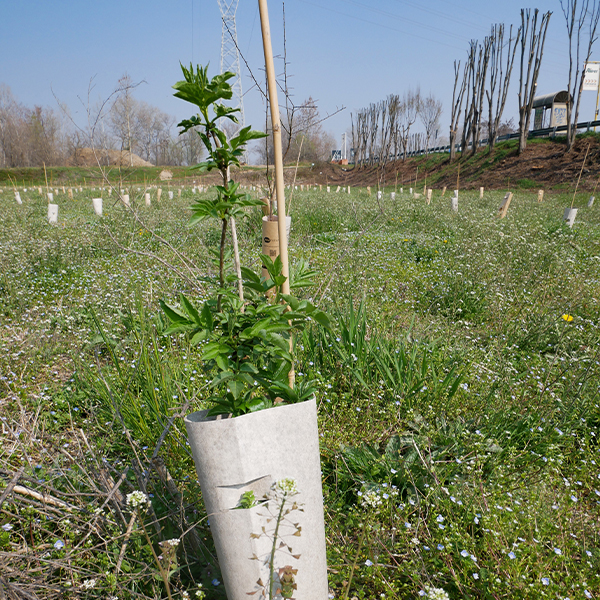
What role do trees play in relation to water?
Water is a vital resource, but it can become dangerous when the land is unable to manage it. On 4 November 1966, Florence was a tragic example of this: the Arno river overflowed, flooding the city and showing how fragile our relationship with water is. Today, with climate change, similar events are becoming increasingly frequent. But trees can make a difference: not only do they produce oxygen and absorb CO2, but they also act as natural water management systems. In our video “What role do trees play with water?”, we discover how woods and forests protect the land and communities.
Hydrogeological risk
What happened in Florence was not an isolated incident, but symbolic of a widespread vulnerability across much of Italy. Young and unstable mountains, fast-flowing rivers and rainfall concentrated in a few hours make our country one of the most exposed in Europe to hydrogeological risk. When these natural factors are compounded by urbanisation and ineffective land management, water is not absorbed by the soil and can lead to landslides and floods.
Recent events, such as the 2023 flood in Emilia-Romagna, have demonstrated how real this vulnerability is: 23 rivers overflowed, 41 municipalities were affected and thousands of people were displaced. With climate change, intense and sudden rainfall and periods of drought are making the land increasingly fragile, increasing the risk to people and infrastructure.
The role of trees
The first reaction is often to build dams and embankments, but nature has already developed a solution: trees. A forest acts as a natural hydraulic system: the roots stabilise slopes and reduce the risk of landslides, the soil rich in organic matter absorbs rainwater, and the canopy slows down the raindrops falling from the sky.
One hectare of wooded land can infiltrate up to 400 mm of rainfall, retaining water and gradually releasing it into rivers and aquifers. This process protects areas from flooding and maintains regular water flows. Trees thus provide concrete ecosystem services, ranging from protection against hydrogeological risk to air quality and biodiversity.
The Tuscany Hills project
In Casciano Terme, in the province of Pisa, the Tuscany Hills project is transforming an abandoned area into a resilient ecosystem. Native trees – oaks, maples, ash trees and alders – are being planted here, chosen to strengthen the soil, increase biodiversity and improve water management.
The project involves more than just planting new trees: the woods help regulate the flow of the Fine stream and prevent sedimentation and flash floods. Habitats are enriched, providing shelter for birds, amphibians and insects, while local communities benefit from a safer and more welcoming landscape. Taking action upstream, with respect to the Arno river basin, is essential to prevent flash floods.
Not just water
Trees do not only protect against hydrogeological risks. They create ecological corridors, improve air quality, capture fine dust and make the area more attractive for tourism. In Tuscany, planting trees also means rebuilding the bond between people and nature, transforming water from a threat into a shared resource.
Would you like to support this project?
With the Tuscany Hills project, we are building an alliance between nature and the community: a forest that protects the land, water and biodiversity. You can get involved too: adopt or gift a tree and come and plant it during our events.






